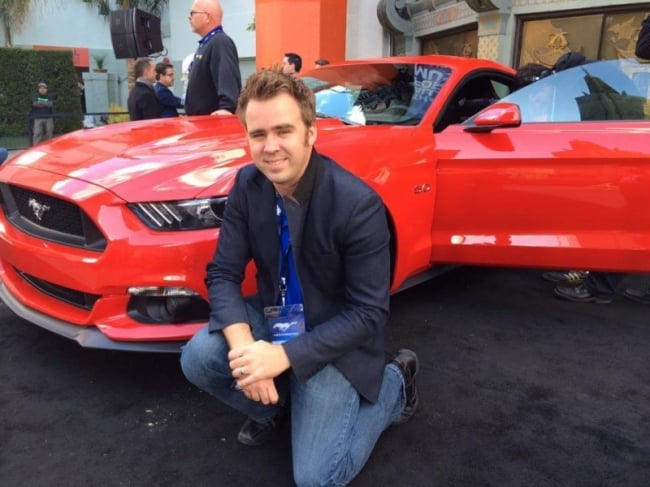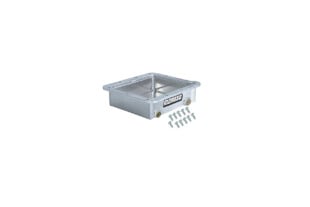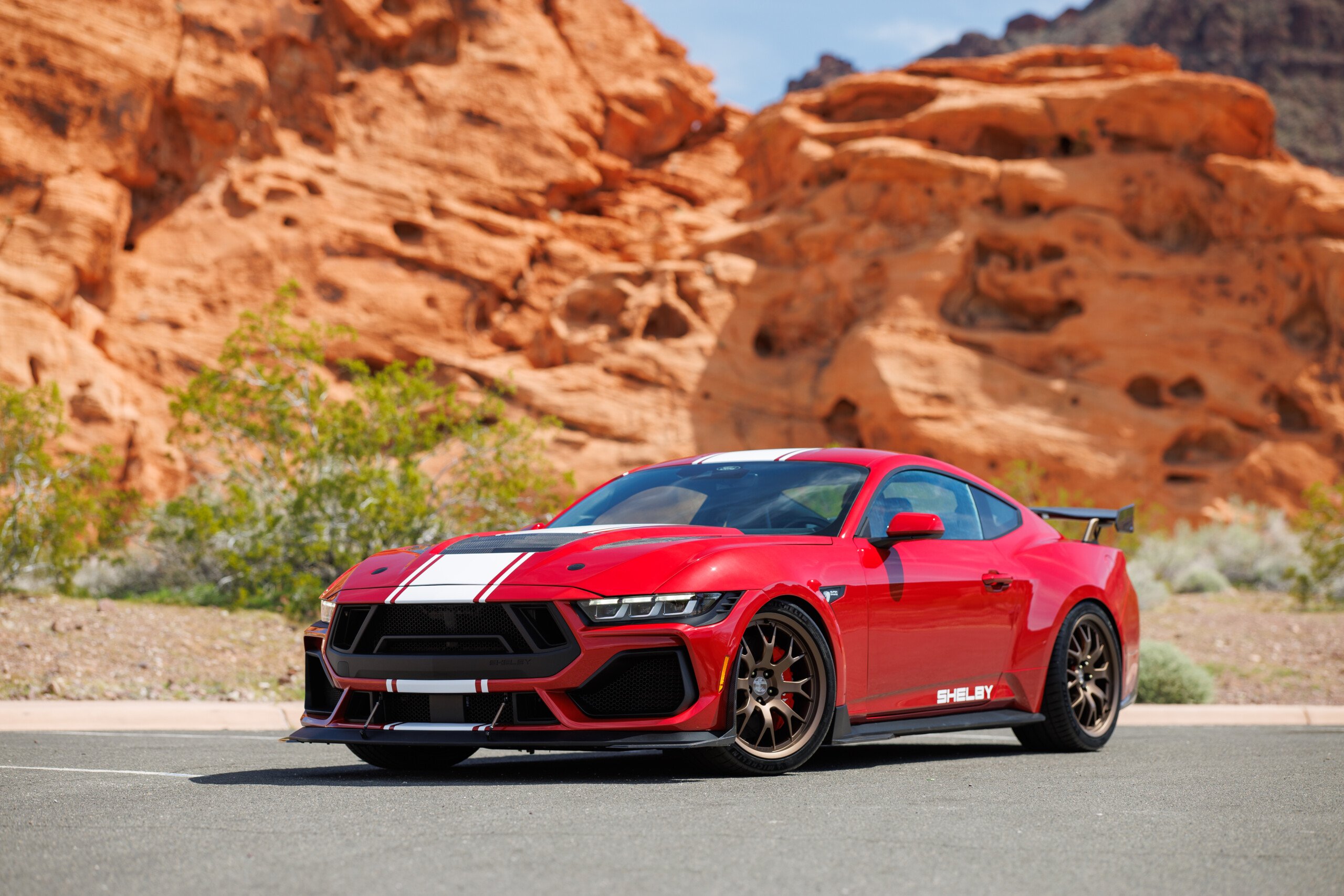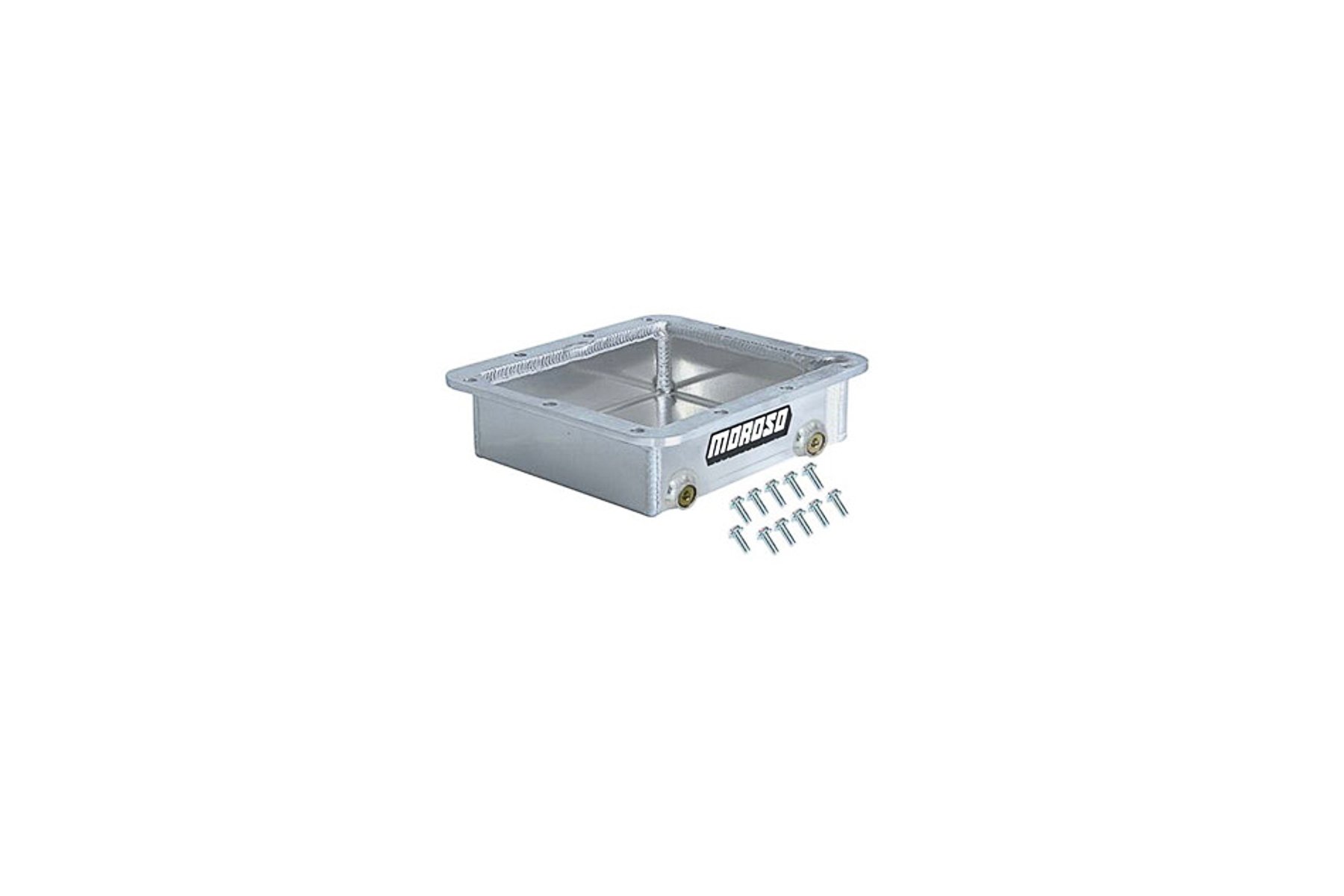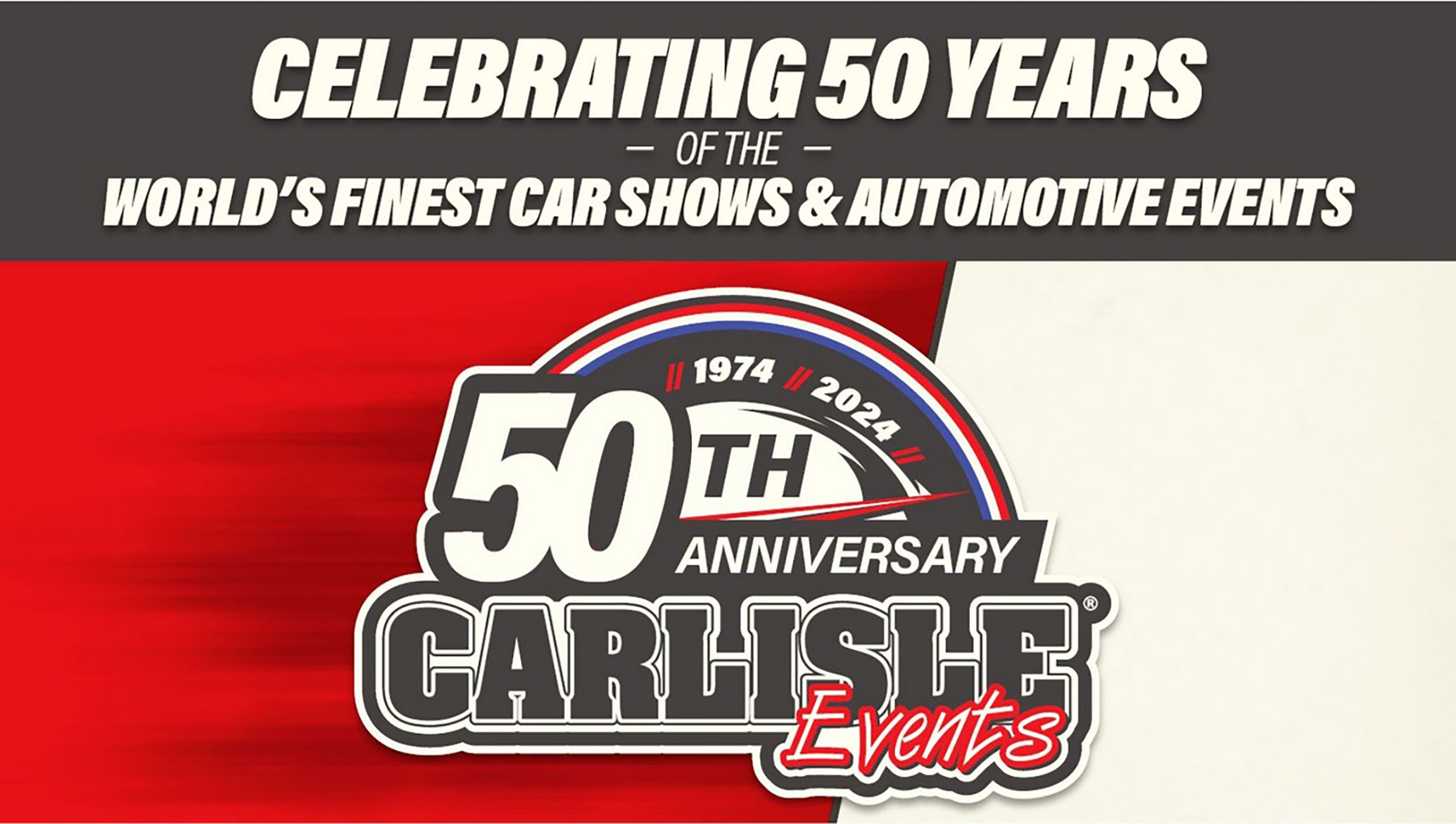Following in the rich tradition of previous Ford factory built Mustang race cars like the 1968 Cobra Jet, the Boss 429 and the FR500S Mustang Challenge car, Ford Racing and AAI (aka the Mustang Plant) started work on a production run of 50 Cobra Jet Mustangs. Two years ago, Ford Racing built 50 Cobra Jet Mustangs at Ford vendor facilities, but the 2010 edition of the car returned home to Flat Rock, Michigan.
For a complete 2010 Cobra Jet build picture gallery, CLICK HERE.
ALSO CHECK BACK IN A FEW WEEKS FOR THE FULL BUILD VIDEO!
In 2005, AAI started building the S197 version of the Mustang and to date has produced over 800,000 units, a number thats pretty impressive considering its a two door sports car. All V6, GT and GT500 models are manufactured on the main line and the build team knew they wanted to be a part of the historic car. While impossible to build on the high volume main line, the 2010 Cobra Jet was built on the AAI pilot assembly line where the plant performs new model training and workstation development. The pilot assembly team is made up of seasoned main line technicians and welcomed the challenge of building such a high profile Mustang.
A 2010 Cobra Jet starts out life as a “prepped” body-in-white 2010 Mustang. Prior to arriving at the Cobra Jet line, a 2010 shell was produced on the main AAI body line and painted Performance White. After paint the unit is sent to Watson Engineering in Taylor, Michigan for an NHRA legal 8.50 e.t. 10-point chromoly cage install. Watson Engineering also installed the rear back seat delete panel, firewall cover plates and transmission access panels. After the cage and body updates were complete at Watson, the body was shipped back to AAI for another trip down the main assembly paint line to coat the cage and interior Performance White in preparation for the Cobra Jet line.
There are two Cobra Jet assembly lines that merge into one assembly line after the car is built into a “roller”. When the Cobra Jet body hits the first build station, the line technician removes the doors for easier access to the interior. The composite cowl hood is also removed to access the engine bay. All installed parts are binned near the station where they will be installed. A computer terminal also provides the technician with build information specific to each car.
Station 1 of the Build
The first part installed on the car is the main wiring harness for the electronics. An electrical bulkhead panel is installed on the passenger side firewall and the battery cable is routed towards the trunk for the electrical kill switch that is mounted on the rear of the quarter panel per NHRA specifications. One cool thing about the Cobra Jet build is that the only parts installed are go fast or safety related items. The body is void of insulation and other sound deading material that weigh a car down. Ford Racing engineers also kept wiring to a minimum to save weight.
After the cabin wiring harness is installed, the battery hold down bracket and Aeromotive Stealth Fuel system is mounted in the trunk. The Stealth Fuel Cell developed for the Cobra Jet is a 6-gallon aluminum racing fuel cell with an Aeromotive Eliminator fuel pump and filter inside the cell unit.
Once the trunk is squared away with the kill switch, fuel cell and battery mount, the technician lifts the body with an overhead hoist to access the floor pan. On the underside of the car the technician installs the upper control arm mount, driveshaft loop, lower radiator support, rear shocks, brake lines and fuel lines. The radiator support (shown above) is a tubular item and weighs a lot less than the OEM Mustang unit.
Station 2 – Interior and Engine Bay Parts
After the underbody is complete in Station 1, the car moves onto Station 2 for interior assembly and engine bay parts install. The first item installed in Station 2 is the carpet as well as the rear interior panels and rear shelf cover. The OEM factory headliner is also part of the Cobra Jet build to complete the plush interior of the factory built racecar. The Cobra Jet 10 point cage has also been pre-certified by an NHRA chassis inspector so the new owner can roll the car right off the trailer and into the tech line.
For the IP (Instrument Panel) install, a preassembled unit complete with Auto Meter Monster Tach is installed. The panel also features the fuse box right where the passenger airbag cover used to be for easy access in the event a fuse blows. Once the IP is in place, Automatic equipped Cobra Jets have a Hurst Quarter Stick shifter mounted to the transmission shifter bracket. One interesting thing Ford Racing engineered into the 2010 car is a removable panel to access the transmission servo and shift linkage.
Once the IP and carpet is installed the line technicians move to the front of the car to install the radiator/fan unit, intercooler heat exchanger and intercooler pump. For an intercooler pump Ford Racing selected a 55-gallon per hour Meziere unit to help intercooler cool the air charge.
Since the pilot assembly line does not move like typical assembly lines, the cars are moved from station the station using large overhead lifts. The lifts are used in the first three stations to place the bodies on adjustable skillets. The skillets can be adjusted to a comfortable height for the workers at that build station.
After the cooling system is mounted the manual brake booster and proportioning valve is installed in the drivers side engine bay. These units were built exclusively for the Cobra Jet and help save a lot of weight in the car. The CJ also has a line lock for locking the front brakes in the burnout box. There are over 100 unique part numbers for the Cobra Jet build so the crew has had to juggle inventory, Just In Time parts shipments and parts availability throughout the 3 week build.
Installing the Supercharged 5.4-liter in the Cobra Jet and Drivetrain
While the Cobra Jet features five engine options, during our visit they were building 5.4L derivatives. The 5.4 Liter Cobra Jet engines are being prepared to meet the chassis at the decking station. The engines are built at the Romeo Niche line 60 miles north of Flat Rock and shipped to the plant in batches. For 2010, Ford Racing offered two versions of the engine. A cast iron block 5.4 liter Supercharged “base” mill or an aluminum block 5.4-liter “Super Cobra Jet” powerplant as an optional upgrade.
All 5.4 Liter Super Cobra Jet engines arrive from Romeo on a engine pallet and are topped with a Ford Racing 4.0 Liter Cobra Jet Supercharger, Ford Racing engineered FEAD (Front Engine Accessory Drive), Cobra Jet Cams and Ford Racing Blue Valve Covers. Once on the engine prep line, technicians install American Racing Headers long tube headers, flywheel and the transmission. For 2010, Ford Racing made four race transmissions available, a race prepped C4 automatic, a 2 speed C2 automatic, a Tremec 6 speed, or a full race Liberty 5-speed unit.
After the engine is prepped for “decking” it’s placed in a movable fixture for attachment of the lower k-member, steering rack and lower control arms. Once the k-member, lower control arms and front spindles are attached, the drag struts are installed complete with Strange Engineering lightweight brake rotors and two piston calipers.
While the engine/front suspension is being prepped, the rear axle is being readied for installation. The Cobra Jet 9” unit is built by Strange Engineering and shipped as a ready to install item complete with rear disc brakes. For 2010 Cobra Jets, Ford Racing offered a 4.11 rear gear ratio for the automatic cars and a 4.29 gear ratio for the manual transmission package. Once the engine and rear-end are ready, a technician moves the engine onto its decking skillet and the rear end onto its own dedicated lift.
The Cobra Jet body is then lifted via the overhead hoist and placed on the “Moon Buggy” for engine and rear end installation. Once placed on the moon buggy the engine is lifted into the Cobra Jet engine bay. Two steel rods are used to “locate” the engine and cradle to the engine bay before lifting the entire assembly into the car. Once the engine and cradle is in place, the four engine cradle bolts are torqued to spec. The transmission cross member is then installed on the transmission and attached to the frame mounts.
Once the engine/transmission is secure in the chassis, the technician then moves to the rear end assembly and lifts the unit into the chassis. The upper control arm and lower control arms are attached and tightened to spec. The Cobra Jet uses spherical rod ends at all attachment points for adjustability. After the rear end is mounted the anti-roll bar system is installed. The Cobra Jet anti-roll bar unit was designed by Ford Racing and Team Z Engineering and is credited for making the car perform so well on the strip.
After the suspension is in place the Dynotech 1-piece driveshaft is installed. The production Mustang GT500 has a 2-piece drive shaft good to around 600 horsepower. With the Cobra Jet producing a bit more and engineered to take repeated 7,000 RPM launches, a beefier Dynotech unit was selected.
Wrapping up the Build
The final step after the decking station is the installation of the wheels and tires. The Cobra Jet has unique Weld Competition front 15 x 3 wheels complete with a Cobra Jet Snake machined into the wheel spoke. Tires on the 2010 Cobra Jet car are from Hoosier and the rear tire size for all the cars we saw being built were 30×10.5×15. All “Super Cobra Jet” equipped Cobra Jets get 30×10.5×15 rear meats while Manual optioned cars get 29x11x15 rear slicks. The other base 5.4L, as well as the three naturally aspirated engine variants, come with a Stock Eliminator legal 30x9x15″ slick.
After the car is a “roller”, it’s lowered down on the ground and the engine is dressed and starts to receive its own unique items. The fuel lines, engine wiring harness, intercooler reservoir, radiator reservoir, coolant lines and front fascia are all installed at this station. Once the engine bay is complete the technicians moves to the interior of the car to work on the steering gear installation, steering wheel, and switch panel.
After station four the two Cobra Jet lines merge into one as the cars are rolled into the safety belt, seat and console installation area. Belt mounts are already welded into the crossbar so the RJS safety belts are already mounted per NHRA tech rules. The Cobra Jet seats start out as basic Mustang V6 seats and an outside vendor installs the submarine belt grommet in the lower seat section and recovers the seat front with unique Cobra Jet logoed material. The headrest also includes the Cobra Jet logo for that added touch.
With the interior now complete, the doors are installed on the car as it passes through the final build station. Sure you could do without power windows but its cool hitting the window down switch to pick-up your time slip after a 9 second pass. Not to mention Ford doesn’t even offer roll down windows in any Mustang. After the doors are fit the front and rear glass is installed and the car begins to take on a finished look.
The final station is where the massive Cobra Jet throttle body, air inlet tube and K&N filter are installed. After the air intake unit is complete the car is ready to be moved to the alignment area for first start, final check and alignment.
Once on the lift, a Cobra Jet build team member starts the car for a systems check. All gauges are monitored for accuracy as well as engine sound. Once everything sounds acceptable the car is shut down for final calibration and prep.
While the car is on the lift the front and rear suspension is checked for alignment. To adjust the rear suspension, the alignment techs use the adjustable panhard bar to center the rear end. For front end alignment, the tie rods are adjusted to bring the suspension into front to rear alignment specifications.
After alignment check the cars are pushed to the decal application area for their unique Cobra Jet decal package. The base Cobra Jet decal package includes; Cobra Jet quarter panel script, CJ fender decal and 5.4-Liter Cobra Jet hood decal. This station is also where the cars get the optional Cobra Jet side decal package applied. If the owner wants a plain white car, the decals are placed in the trunk for the owners safe keeping.
While we were at the Cobra Jet assembly the build team was averaging 3-4 cars a day. Considering the complexity of some of the part installs and the hiccups that always arise the team appeared enthusiastic to be a part of the 2010 Cobra Jet program. While we don’t know if any of the 50 cars will win a NHRA National Event like John Calvert’s 2008 Cobra Jet, the 2010 version has several improvements over the first model. We’re anticipating many of these cars will hit the track early this year and, with some hard work from the racers, don’t be surprised if one dips into the 8 second zone. Impressive considering its a turn-key Ford Factory built car.


